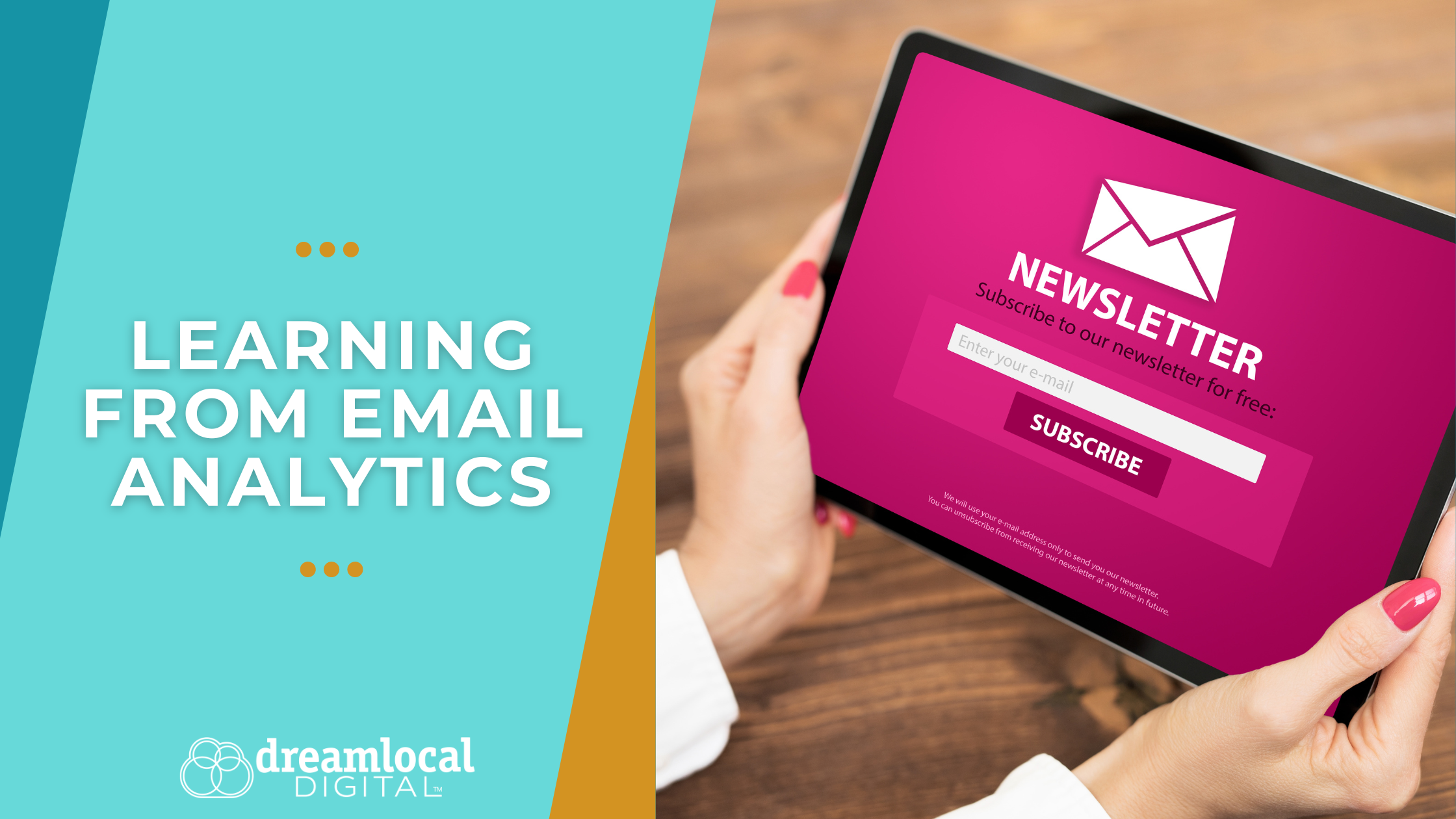Learning From Email Analytics

Email marketing is a cornerstone of digital marketing, providing a direct line of communication to your audience. Whether you’re engaging in paid advertising, social media marketing or content marketing, email campaigns can enhance your efforts and business growth. However, to truly harness the power of email marketing, it’s essential to delve into email analytics.
By understanding metrics such as open rates, clicks, unsubscribes and subscriber growth, marketers can refine their strategies, enhance their branding and ultimately drive better results. Let’s look at the essential analytics every business should track and how to use this data effectively.
Key Email Marketing Analytics
1. Open Rate
What It Is: Open rate is simply the percentage of recipients who open your email.
Why It Matters: A high open rate means your subject lines are enticing, and your audience is curious about your content.
Application:
-
Subject Lines: Play around with different styles and tones. Personalizing subject lines boosts open rates.
-
Timing: Experiment with sending your emails at various times and days. Notice what works best and stick with it.
-
Segmentation: Send targeted emails to specific audience segments to increase relevance and engagement.
2. Click-Through Rate (CTR)
What It Is: The CTR is the percentage of recipients who click on links in your email.
Why It Matters: A high CTR shows that your content is engaging and your calls-to-action (CTAs) are compelling.
Application:
-
Content: Make sure your content is valuable and relevant. Adding images and videos can also boost engagement.
-
CTAs: Use clear, actionable language for your CTAs and make them stand out.
-
Design: Ensure your emails look great on both desktop and mobile devices.
3. Unsubscribes
What It Is: The unsubscribe rate is the percentage of recipients who opt out of your email list.
Why It Matters: Keeping an eye on unsubscribes helps you understand if your content is hitting the mark or if you’re sending emails too frequently.
Application:
-
Frequency: Evaluate how often you send emails. Too many emails can lead to fatigue, while too few can cause disengagement.
-
Content Relevance: Make sure your content aligns with what subscribers signed up for. Use surveys or feedback forms to understand their preferences.
-
List Management: Regularly clean your email list to remove inactive subscribers, ensuring your list remains healthy and engaged.
4. Subscriber Growth
What It Is: Subscriber growth measures how fast your email list is growing.
Why It Matters: Steady growth means your brand is gaining traction, and your email efforts are paying off.
Application:
-
Lead Magnets: Offer valuable incentives like e-books, webinars or exclusive content to attract new subscribers.
-
Landing Pages: Optimize your landing pages with clear, persuasive copy and an easy sign-up process.
-
Branding: Ensure consistency with your branding guide across all channels to build trust and encourage more sign-ups.
Turning Insights Into Action
Tracking these email marketing metrics allows you to make smarter, data-driven decisions. These insights enable your business to make smarter decisions faster. Here’s how you can apply these insights to improve your overall digital marketing strategy:
-
Refine Your Branding: Use the data to understand what resonates with your audience and incorporate these insights into your branding guide. This ensures consistency and strengthens your brand identity across all touchpoints.
-
Content Strategy: Look at what types of content drive the most engagement and clicks. Focus on producing more of what works and keep testing new ideas.
-
Landing Page Optimization: If you have a high CTR but low conversions, it’s time to revisit your landing pages. Ensure they deliver on the promises made in your emails and provide a smooth user experience.
-
Segmentation and Personalization: Use the data to segment your audience more effectively. Personalized emails based on subscriber behavior and preferences are more likely to drive engagement and conversions.
-
A/B Testing: Regularly test different elements of your emails — from subject lines and CTAs to images and layouts. Use the results to continually optimize your campaigns.
The Value of a Loyal Email List
Having a list full of loyal customers is invaluable. These folks are not only more likely to engage with your content but also to become brand advocates. Focus on building and maintaining a quality list rather than just growing it. Prioritize engagement and relevance over sheer numbers.
Email analytics are a goldmine of insights that can transform your email marketing efforts. By paying attention to open rates, CTR, unsubscribes and subscriber growth, you can fine-tune your strategies, improve your branding and make data-driven decisions that boost your digital marketing performance.
Want to get started right away? Work with the email marketing experts at Dream Local Digital to start improving your marketing ROI. Contact us to learn how we can best serve you!
Newsletter Signup
Stay up to date on the latest digital marketing news, updates, and more. Sign up to receive our newsletter!




